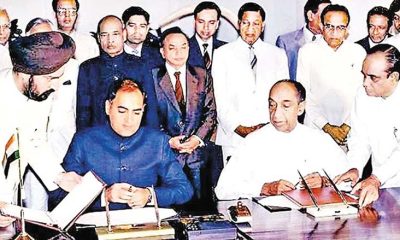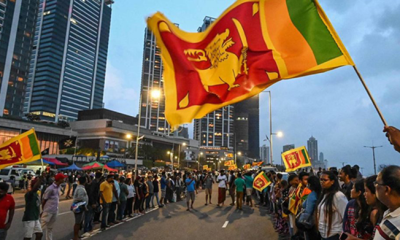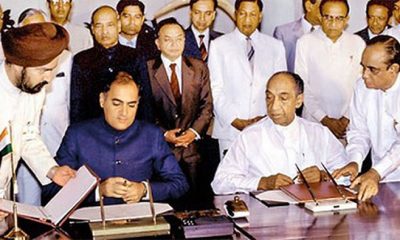Features
Full implementation of 13A – Final solution to ‘national problem’ or end of unitary state? – Part VI

by Kalyananda Tiranagama
Executive Director
Lawyers for Human Rights and Development
(Part V of this article appeared in The Island of 02 Oct. 2023)
Six months later, in July 1986, further talks were held between the Sri Lankan government and an Indian delegation led by P Chidambaram, Minister of State, a person from Tamil Nadu. Based on those talks, a detailed Note prepared containing observations of the Indian government on the proposals of the Sri Lanka government as the Framework was sent to the Indian Government.
The following three paragraphs from this Note were cited in the Judgement of Wanasundara J in the 13th Amendment Case as relevant for its determination:
1. A Provincial Council shall be established in each Province. Law-making and Executive (including Financial) powers shall be devolved upon the Provincial Councils by suitable constitutional amendments, without resort to a referendum. After further discussions subjects broadly corresponding to the proposals contained in Annexe 1 to the Draft Framework of Accord and Undertaking and the entries in List ll and List III of the Seventh Schedule of the Indian Constitution shall be devolved upon Provincial Councils.
It is strange that this paragraph suggests to bring constitutional amendments to devolve Law-making and Executive (including Financial) powers on the Provincial Councils, without resort to a referendum. It is not clear on whose suggestion this phrase – without resort to a referendum – was included, Sri Lanka or India? But it is most likely that it was India, feeling the sentiments of the vast majority of the people in the South and knowing the most probable outcome of a referendum.
Inclusion of this phrase – without resort to a referendum – may have had some impact on the minds of the Judges in arriving at a determination on the Bills.
There can be no doubt that the phrase – the entries in List ll and List III of the Seventh Schedule of the Indian Constitution shall be devolved upon Provincial Councils – included on the suggestion of Indian side.
2. In the Northern Province and in the Eastern Province the Provincial Councils shall be deemed to be constituted immediately after the constitutional amendments come into force……..
What does this mean? Can they come into being even before the Provincial Councils Bill and the Provincial Councils Elections Bill are passed and the Elections held? Where is People’s sovereignty? This also appears to be an Indian demand.
3. ‘‘In a preamble to this Note, it was agreed that suitable constitutional and legal arrangements would be made for those two Provinces to act in co-ordination. In consequence of these talks a constitutional amendment took shape and form and three lists – (1) The Reserved List (List II), (2) The Provincial List (List I); and (3) The Concurrent List (List Ill) too were formulated.’’
‘Suitable constitutional and legal arrangements to be made for those two Provinces to act in co-ordination’. This is another subtle and mild formulation used to convey the idea that the Northern and Eastern Provinces would be merged into one unit.
Mr. Chidambaram may have seen to it that the aspirations of the TULF are incorporated into the agreement to a certain extent.
‘‘The Bangalore discussions held between President J. R. Jayewardene and Indian Prime Minister Rajiv Gandhi in November 1986 were the next stage of the discussions. At the Bangalore discussions Sri Lanka had to agree to all the Cardinal Principles of the TULF and other Tamil militant groups, which Sri Lanka had totally refused even to discuss at Thimphu talks and not included in the Draft Terms of Accord and Understanding reached in New Delhi in September 1985.
The Sri Lanka government’s observations on the Working Paper on Bangalore Discussion dated 26th November 1986 show that the following suggestions made by the Indian Government were substantially adopted:
Recognition that the Northern and Eastern Provinces have been areas of historical habitation of Sri Lankan Tamil speaking peoples who have at all times hitherto lived together in the territory with other ethnic groups;
Northern and Eastern Provinces should form one administrative unit for an interim period and that its continuance should depend on a Referendum;
The Governor shall have the same powers as the Governor of a State in India.
India had also proposed to the Sri Lankan government that
the Governor should only act on the advice of the Board of Ministers and should explore the possibility of further curtailing the Governor’s discretionary powers;
provision be made on the lines of Article 249 of the Indian Constitution on the question of Parliament’s power to legislate on matters in the Provincial list;
Article 254 of the Indian Constitution be adopted in regard to the Provincial Council’s power to make a law before or after a parliamentary law in respect of a matter in the Concurrent List.
To ensure that the Government of Sri Lanka would comply with these suggestions in enacting laws for the implementation of these suggestions, the two most crucial suggestions were included in the Indo Lanka Accord signed by President J. R. Jayewardene and Prime Minister Rajiv Gandhi on the 29th July 1987 in Colombo.
The First part of the Indo-Lanka Accord reaffirmed what was agreed at Bangalore that (a) the Northern and Eastern Provinces have been areas of historical habitation of Sri Lanka Tamil Speaking people who at all times hitherto lived together in the territory with other ethnic groups. It also provided for (b) these two Provinces to form one administrative unit for an interim period and (c) for elections to the Provincial Council to be held before 31st December 1987.
From the above material, it clearly appears beyond any doubt that the 13th Amendment and the Provincial Councils are not a solution reached through consensus between two independent states following free negotiations, but something forcibly imposed on Sri Lanka by India, with a view to placating the demands of the TULF and the other Tamil groups, contrary to the wishes of the Govt of Sri Lanka.
This explains why Indian political leaders and high officials of the Indian Govt frequently visit Sri Lanka and meet our political leaders demanding the full implementation of the 13th Amendment. That is why leaders of our Tamil Political Parties frequently rush to the Indian High Commission complaining of their grievances and requesting the Indian High Commissioner to bring pressure on our Govt to grant their demands.
As shown above, due to India’s pressure, Sri Lanka had to adopt the three main proposals made by India at the Bangalore discussions. If Sri Lanka had adopted all the proposals as suggested by India and implemented them it would have been the end of the Unitary State of Sri Lanka and created a fully Federal State. However, President Jayewardene, as a shrewd and far-sighting politician, has taken care not to give effect to some of the proposals at the implementation stage.
President Jayewardene has not adopted the Indian proposal that ‘the Governor should only act on the advice of the Board of Ministers and should explore the possibility of further curtailing the Governor’s discretionary powers’. Under the 13th Amendment the Governor, as the representative of the President, is vested with undiminished power of exercising his discretion, not on the advice of the Board of Ministers of the Provincial Council, but as directed by the President. It is this Governor’s unfettered discretion that has prevented Sri Lanka from becoming a full Federal State, with Provincial Councils as federal units.
The majority Judgement in the 13th Amendment case explains how this Governor’s discretion has prevented Sri Lanka from becoming a fully federal state, thus:
‘‘With respect to executive powers an examination of the relevant provisions of the Bill underscores the fact that in exercising their executive power, the Provincial Councils are subject to the control of the Centre and are not sovereign bodies.
‘‘Article 154C provides that the executive power extending to the matters with respect to which a Provincial Council has power to make statutes shall be exercised by the Governor of the Province either directly or through Ministers of the Board of Ministers or through officers subordinate to him, in accordance with Article 154F.
‘‘Article 154F states that the Governor shall, in the exercise of his functions, act in accordance with such advice, except in so far as he is by or under the Constitution required to exercise his functions or any of them in his discretion.
‘‘The Governor is appointed by the President and holds office in accordance with Article 4(b) which provides that the executive power of the People shall be exercised by the President of the Republic, during the pleasure of the President (Article 154B (2)). The Governor derived his authority from the President and exercises the executive power vested in him as a delegate of the President. It is open to the President therefore by virtue of Article 4(b) of the Constitution to give directions and monitor the Governor’s exercise of this executive power vested in him.
‘‘ Although he is required by Article 154F(1) to exercise his functions in accordance with the advice of the Board of Ministers, this is subject to the qualification “except in so far as he is by or under the Constitution required to exercise his functions or any of them in his discretion.” Under the Constitution the Governor as a representative of the President is required to act in his discretion in accordance with the instructions and directions of the President.
‘‘ Article 154F(2) mandates that the Governor’s discretion shall be on the President’s directions and that the decision of the Governor as to what is in his discretion shall be final and not be called in question in any court on the ground that he ought or ought not to have acted on his discretion.
‘‘ So long as the President retains, the power to give directions to the Governor regarding the exercise of his executive functions, and the Governor is bound by such directions superseding the advice of the Board of Ministers and where the failure of the Governor or Provincial Council to comply with or give effect to any directions given to the Governor or such Council by the President under Chapter XVII of the Constitution will entitle the President to hold that a situation has arisen in which the administration of the Province cannot be carried on in accordance with the provisions of the Constitution and take over the functions and powers of the Provincial Council (Article 154K and 154L), there can be no gainsaying the fact that the President remains supreme or sovereign in the executive field and the Provincial Council is only a body subordinate to him.’’ (Pp. 322 – 323)
That is why the Tamil political parties stand for the abolition of Executive Presidency.
(To be continued)
Features
The US-China rivalry and challenges facing the South
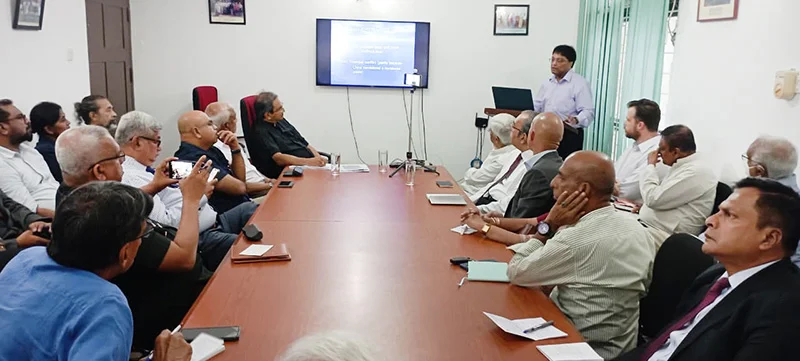
 The US-China rivalry could be said to make-up the ‘stuff and substance’ of world politics today but rarely does the international politics watcher and student of the global South in particular get the opportunity of having a balanced and comprehensive evaluation of this crucial relationship. But such a balanced assessment is vitally instrumental in making sense of current world power relations.
The US-China rivalry could be said to make-up the ‘stuff and substance’ of world politics today but rarely does the international politics watcher and student of the global South in particular get the opportunity of having a balanced and comprehensive evaluation of this crucial relationship. But such a balanced assessment is vitally instrumental in making sense of current world power relations.
Thanks to the Regional Centre for Strategic Studies (RCSS), Colombo the above window of opportunity was opened on December 8th for those sections of the public zealously pursuing an understanding of current issues in global politics. The knowledge came via a forum that was conducted at the RCSS titled, ‘The US-China Rivalry and Implications for the Indo-Pacific’, where Professor Neil DeVotta of the Wake Forest University of North Carolina in the US, featured as the speaker.
A widely representative audience was present at the forum, including senior public servants, the diplomatic corps, academics, heads of civil society organizations, senior armed forces personnel and the media. The event was ably managed by the Executive Director of the RCSS, retired ambassador Ravinatha Aryasinha. Following the main presentation a lively Q&A session followed, where many a point of interest was aired and discussed.
While there is no doubt that China is fast catching up with the US with regard to particularly military, economic, scientific and technological capability, Prof. DeVotta helped to balance this standard projection of ‘China’s steady rise’ by pointing to some vital facts about China, the omission of which would amount to the observer having a somewhat uninformed perception of global political realities.
The following are some of the facts about contemporary China that were highlighted by Prof. DeVotta:
* Money is steadily moving out of China and the latter’ s economy is slowing down. In fact the country is in a ‘ Middle Income Trap’. That is, it has reached middle income status but has failed to move to upper income status since then.
* People in marked numbers are moving out of China. It is perhaps little known that some Chinese are seeking to enter the US with a view to living there. The fact is that China’s population too is on the decline.
* Although the private sector is operative in China, there has been an increase in Parastatals; that is, commercial organizations run by the state are also very much in the fore. In fact private enterprises have begun to have ruling Communist Party cells in them.
* China is at its ‘peak power’ but this fact may compel it to act ‘aggressively’ in the international sphere. For instance, it may be compelled to invade Taiwan.
* A Hard Authoritarianism could be said to characterize central power in China today, whereas the expectation in some quarters is that it would shift to a Soft Authoritarian system, as is the case in Singapore.
* China’s influence in the West is greater than it has ever been.
The speaker was equally revelatory about the US today. Just a few of these observations are:
* The US is in a ‘Unipolar Moment’. That is, it is the world’s prime power. Such positions are usually not longstanding but in the case of the US this position has been enjoyed by it for quite a while.
* China is seen by the US as a ‘Revisionist Power’ as opposed to being a ‘Status Quo Power.’ That is China is for changing the world system slowly.
* The US in its latest national security strategy is paying little attention to Soft Power as opposed to Hard Power.
* In terms of this strategy the US would not allow any single country to dominate the Asia-Pacific region.
* The overall tone of this strategy is that the US should step back and allow regional powers to play a greater role in international politics.
* The strategy also holds that the US must improve economic ties with India, but there is very little mention of China in the plan.
Given these observations on the current international situation, a matter of the foremost importance for the economically weakest countries of the South is to figure out how best they could survive materially within it. Today there is no cohesive and vibrant collective organization that could work towards the best interests of the developing world and Dr. DeVotta was more or less correct when he said that the Non-alignment Movement (NAM) has declined.
However, this columnist is of the view that rather being a spent force, NAM was allowed to die out by the South. NAM as an idea could never become extinct as long as economic and material inequalities between North and South exist. Needless to say, this situation is remaining unchanged since the eighties when NAM allowed itself to be a non-entity so to speak in world affairs.
The majority of Southern countries did not do themselves any good by uncritically embracing the ‘market economy’ as a panacea for their ills. As has been proved, this growth paradigm only aggravated the South’s development ills, except for a few states within its fold.
Considering that the US would be preferring regional powers to play a more prominent role in the international economy and given the US’ preference to be a close ally of India, the weakest of the South need to look into the possibility of tying up closely with India and giving the latter a substantive role in advocating the South’s best interests in the councils of the world.
To enable this to happen the South needs to ‘get organized’ once again. The main differences between the past and the present with regard to Southern affairs is that in the past the South had outstanding leaders, such as Jawaharlal Nehru of India, who could doughtily stand up for it. As far as this columnist could ascertain, it is the lack of exceptional leaders that in the main led to the decline of NAM and other South-centred organizations.
Accordingly, an urgent task for the South is to enable the coming into being of exceptional leaders who could work untiringly towards the realization of its just needs, such as economic equity. Meanwhile, Southern countries would do well to, indeed, follow the principles of NAM and relate cordially with all the major powers so as to realizing their best interests.
Features
Sri Lanka and Global Climate Emergency: Lessons of Cyclone Ditwah
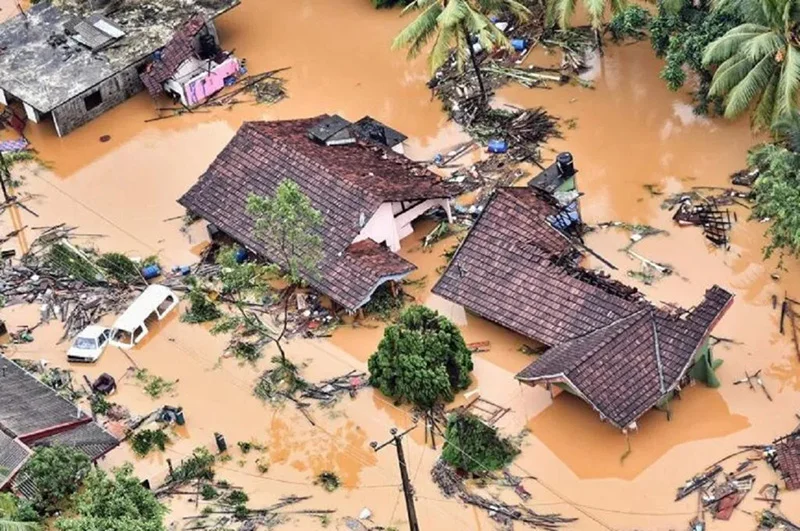
Tropical Cyclone Ditwah, which made landfall in Sri Lanka on 28 November 2025, is considered the country’s worst natural disaster since the deadly 2004 tsunami. It intensified the northeast monsoon, bringing torrential rainfall, massive flooding, and 215 severe landslides across seven districts. The cyclone left a trail of destruction, killing nearly 500 people, displacing over a million, destroying homes, roads, and railway lines, and disabling critical infrastructure including 4,000 transmission towers. Total economic losses are estimated at USD 6–7 billion—exceeding the country’s foreign reserves.
The Sri Lankan Armed Forces have led the relief efforts, aided by international partners including India and Pakistan. A Sri Lanka Air Force helicopter crashed in Wennappuwa, killing the pilot and injuring four others, while five Sri Lanka Navy personnel died in Chundikkulam in the north while widening waterways to mitigate flooding. The bravery and sacrifice of the Sri Lankan Armed Forces during this disaster—as in past disasters—continue to be held in high esteem by grateful Sri Lankans.
The Sri Lankan government, however, is facing intense criticism for its handling of Cyclone Ditwah, including failure to heed early warnings available since November 12, a slow and poorly coordinated response, and inadequate communication with the public. Systemic issues—underinvestment in disaster management, failure to activate protocols, bureaucratic neglect, and a lack of coordination among state institutions—are also blamed for avoidable deaths and destruction.
The causes of climate disasters such as Cyclone Ditwah go far beyond disaster preparedness. Faulty policymaking, mismanagement, and decades of unregulated economic development have eroded the island’s natural defenses. As climate scientist Dr. Thasun Amarasinghe notes:
“Sri Lankan wetlands—the nation’s most effective natural flood-control mechanism—have been bulldosed, filled, encroached upon, and sold. Many of these developments were approved despite warnings from environmental scientists, hydrologists, and even state institutions.”
Sri Lanka’s current vulnerabilities also stem from historical deforestation and plantation agriculture associated with colonial-era export development. Forest cover declined from 82% in 1881 to 70% in 1900, and to 54–50% by 1948, when British rule ended. It fell further to 44% in 1954 and to 16.5% by 2019.
Deforestation contributes an estimated 10–12% of global greenhouse gas emissions. Beyond removing a vital carbon sink, it damages water resources, increases runoff and erosion, and heightens flood and landslide risk. Soil-depleting monocrop agriculture further undermines traditional multi-crop systems that regenerate soil fertility, organic matter, and biodiversity.
In Sri Lanka’s Central Highlands, which were battered by Cyclone Ditwah, deforestation and unregulated construction had destabilised mountain slopes. Although high-risk zones prone to floods and landslides had long been identified, residents were not relocated, and construction and urbanisation continued unchecked.
Sri Lanka was the first country in Asia to adopt neoliberal economic policies. With the “Open Economy” reforms of 1977, a capitalist ideology equating human well-being with quantitative growth and material consumption became widespread. Development efforts were rushed, poorly supervised, and frequently approved without proper environmental assessment.
Privatisation and corporate deregulation weakened state oversight. The recent economic crisis and shrinking budgets further eroded environmental and social protections, including the maintenance of drainage networks, reservoirs, and early-warning systems. These forces have converged to make Sri Lanka a victim of a dual climate threat: gradual environmental collapse and sudden-onset disasters.
Sri Lanka: A Climate Victim
Sri Lanka’s carbon emissions remain relatively small but are rising. The impact of climate change on the island, however, is immense. Annual mean air temperature has increased significantly in recent decades (by 0.016 °C annually between 1961 and 1990). Sea-level rise has caused severe coastal erosion—0.30–0.35 meters per year—affecting nearly 55% of the shoreline. The 2004 tsunami demonstrated the extreme vulnerability of low-lying coastal plains to rising seas.
The Cyclone Ditwah catastrophe was neither wholly new nor surprising. In 2015, the Geneva-based Internal Displacement Monitoring Centre (IDMC) identified Sri Lanka as the South Asian country with the highest relative risk of disaster-related displacement: “For every million inhabitants, 15,000 are at risk of being displaced every year.”
IDMC also noted that in 2017 the country experienced seven disaster events—mainly floods and landslides—resulting in 135,000 new displacements and that Sri Lanka “is also at risk for slow-onset impacts such as soil degradation, saltwater intrusion, water scarcity, and crop failure”.
Sri Lanka ranked sixth among countries most affected by extreme weather events in 2018 (Germanwatch) and second in 2019 (Global Climate Risk Index). Given these warnings, Cyclone Ditwah should not have been a surprise. Scientists have repeatedly cautioned that warmer oceans fuel stronger cyclones and warmer air holds more moisture, leading to extreme rainfall. As the Ceylon Today editorial of December 1, 2025 also observed:
“…our monsoons are no longer predictable. Cyclones form faster, hit harder, and linger longer. Rainfall becomes erratic, intense, and destructive. This is not a coincidence; it is a pattern.”
Without urgent action, even more extreme weather events will threaten Sri Lanka’s habitability and physical survival.
A Global Crisis
Extreme weather events—droughts, wildfires, cyclones, and floods—are becoming the global norm. Up to 1.2 billion people could become “climate refugees” by 2050. Global warming is disrupting weather patterns, destabilising ecosystems, and posing severe risks to life on Earth. Indonesia and Thailand were struck by the rare and devastating Tropical Cyclone Senyar in late November 2025, occurring simultaneously with Cyclone Ditwah’s landfall in Sri Lanka.
More than 75% of global greenhouse gas emissions—and nearly 90% of carbon emissions—come from burning coal, oil, and gas, which supply about 80% of the world’s energy. Countries in the Global South, like Sri Lanka, which contribute least to greenhouse gas emissions, are among the most vulnerable to climate devastation. Yet wealthy nations and multilateral institutions, including the World Bank, continue to subsidise fossil fuel exploration and production. Global climate policymaking—including COP 30 in Belém, Brazil, in 2025—has been criticised as ineffectual and dominated by fossil fuel interests.
If the climate is not stabilised, long-term planetary forces beyond human control may be unleashed. Technology and markets are not inherently the problem; rather, the issue lies in the intentions guiding them. The techno-market worldview, which promotes the belief that well-being increases through limitless growth and consumption, has contributed to severe economic inequality and more frequent extreme weather events. The climate crisis, in turn, reflects a profound mismatch between the exponential expansion of a profit-driven global economy and the far slower evolution of human consciousness needed to uphold morality, compassion, generosity and wisdom.
Sri Lanka’s 2025–26 budget, adopted on November 14, 2025—just as Cyclone Ditwah loomed—promised subsidised land and electricity for companies establishing AI data centers in the country.
President Anura Kumara Dissanayake told Parliament: “Don’t come questioning us on why we are giving land this cheap; we have to make these sacrifices.”
Yet Sri Lanka is a highly water-stressed nation, and a growing body of international research shows that AI data centers consume massive amounts of water and electricity, contributing significantly to greenhouse gas emissions.
The failure of the narrow, competitive techno-market approach underscores the need for an ecological and collective framework capable of addressing the deeper roots of this existential crisis—both for Sri Lanka and the world.
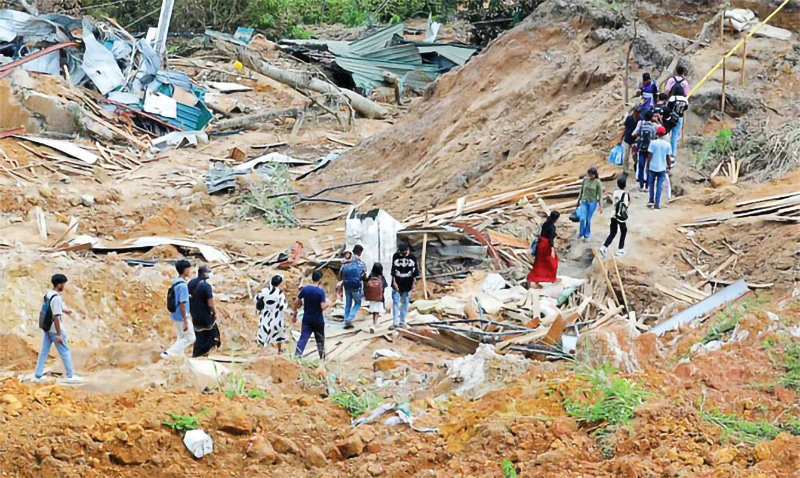
A landslide in Sri Lanka (AFP picture)
Ecological and Human Protection
Ecological consciousness demands
recognition that humanity is part of the Earth, not separate from it. Policies to address climate change must be grounded in this understanding, rather than in worldviews that prize infinite growth and technological dominance. Nature has primacy over human-created systems: the natural world does not depend on humanity, while humanity cannot survive without soil, water, air, sunlight, and the Earth’s essential life-support systems.
Although a climate victim today, Sri Lanka is also home to an ancient ecological civilization dating back to the arrival of the Buddhist monk Mahinda Thera in the 3rd century BCE. Upon meeting King Devanampiyatissa, who was out hunting in Mihintale, Mahinda Thera delivered one of the earliest recorded teachings on ecological interdependence and the duty of rulers to protect nature:
“O great King, the birds of the air and the beasts of the forest have as much right to live and move about in any part of this land as thou. The land belongs to the people and all living beings; thou art only its guardian.”
A stone inscription at Mihintale records that the king forbade the killing of animals and the destruction of trees. The Mihintale Wildlife Sanctuary is believed to be the world’s first.
Sri Lanka’s ancient dry-zone irrigation system—maintained over more than a millennium—stands as a marvel of sustainable development. Its network of interconnected reservoirs, canals, and sluices captured monsoon waters, irrigated fields, controlled floods, and even served as a defensive barrier. Floods occurred, but historical records show no disasters comparable in scale, severity, or frequency to those of today. Ancient rulers, including the legendary reservoir-builder King Parākramabāhu, and generations of rice farmers managed their environment with remarkable discipline and ecological wisdom.
The primacy of nature became especially evident when widespread power outages and the collapse of communication networks during Cyclone Ditwah forced people to rely on one another for survival. The disaster ignited spontaneous acts of compassion and solidarity across all communities—men and women, rich and poor, Buddhists, Christians, Muslims, and Hindus. Local and international efforts mobilized to rescue, shelter, feed, and emotionally support those affected. These actions demonstrated a profound human instinct for care and cooperation, often filling vacuums left by formal emergency systems.
Yet spontaneous solidarity alone is insufficient. Sri Lanka urgently needs policies on sustainable development, environmental protection, and climate resilience. These include strict, science-based regulation of construction; protection of forests and wetlands; proper maintenance of reservoirs; and climate-resilient infrastructure. Schools should teach environmental literacy that builds unity and solidarity, rather than controversial and divisive curriculum changes like the planned removal of history and introduction of contested modules on gender and sexuality.
If the IMF and international creditors—especially BlackRock, Sri Lanka’s largest sovereign bondholder, valued at USD 13 trillion—are genuinely concerned about the country’s suffering, could they not cancel at least some of Sri Lanka’s sovereign debt and support its rebuilding efforts? Addressing the climate emergency and the broader existential crisis facing Sri Lanka and the world ultimately requires an evolution in human consciousness guided by morality, compassion, generosity and wisdom. (Courtesy: IPS NEWS)
Dr Asoka Bandarage is the author of Colonialism in Sri Lanka: The Political Economy of the Kandyan Highlands, 1833-1886 (Mouton) Women, Population and Global Crisis: A Politico-Economic Analysis (Zed Books), The Separatist Conflict in Sri Lanka: Terrorism, Ethnicity, Political Economy, ( Routledge), Sustainability and Well-Being: The Middle Path to Environment, Society and the Economy (Palgrave MacMillan) Crisis in Sri Lanka and the World: Colonial and Neoliberal Origins, Ecological and Collective Alternatives (De Gruyter) and numerous other publications. She serves on the Advisory Boards of the Interfaith Moral Action on Climate and Critical Asian Studies.
Features
Cliff and Hank recreate golden era of ‘The Young Ones’

 Cliff Richard and Hank Marvin’s reunion concert at the Riverside Theatre in Perth, Australia, on 01 November, 2025, was a night to remember.
Cliff Richard and Hank Marvin’s reunion concert at the Riverside Theatre in Perth, Australia, on 01 November, 2025, was a night to remember.
The duo, who first performed together in the 1950s as part of The Shadows, brought the house down with their classic hits and effortless chemistry.
The concert, part of Cliff’s ‘Can’t Stop Me Now’ tour, featured iconic songs like ‘Summer Holiday’, ‘The Young Ones’, ‘Bachelor Boy’, ‘Living Doll’ and a powerful rendition of ‘Mistletoe and Wine.’
Cliff, 85, and Hank, with his signature red Fender Stratocaster, proved that their music and friendship are timeless.
According to reports, the moment the lights dimmed and the first chords of ‘Move It’ rang out, the crowd knew they were in for something extraordinary.
Backed by a full band, and surrounded by dazzling visuals, Cliff strode onto the stage in immaculate form – energetic and confident – and when Hank Marvin joined him mid-set, guitar in hand, the audience erupted in applause that shook the hall.
Together they launched into ‘The Young Ones’, their timeless 1961 hit which brought the crowd to its feet, with many in attendance moved to tears.
The audience was treated to a journey through time, with vintage film clips and state-of-the-art visuals adding to the nostalgic atmosphere.
Highlights of the evening included Cliff’s powerful vocals, Hank’s distinctive guitar riffs, and their playful banter on stage.

Cliff posing for The Island photographer … February,
2007
Cliff paused between songs to reflect on their shared journey saying:
“It’s been a lifetime of songs, memories, and friendship. Hank and I started this adventure when we were just boys — and look at us now, still up here making noise!”
As the final chords of ‘Congratulations’ filled the theatre, the crowd rose for a thunderous standing ovation that lasted several minutes.
Cliff waved, Hank gave a humble bow, and, together, they left the stage, arm-in-arm, to the refrain of “We’re the young ones — and we always will be.”
Reviews of the show were glowing, with fans and critics alike praising the duo’s energy, camaraderie, and enduring talent.
Overall, the Cliff Richard and Hank Marvin reunion concert was a truly special experience, celebrating the music and friendship that has captivated audiences for decades.
When Cliff Richard visited Sri Lanka, in February, 2007, I was invited to meet him, in his suite, at a hotel, in Colombo, and I presented him with my music page, which carried his story, and he was impressed.
In return, he personally autographed a souvenir for me … that was Cliff Richard, a truly wonderful human being.
-

 News3 days ago
News3 days agoOver 35,000 drug offenders nabbed in 36 days
-
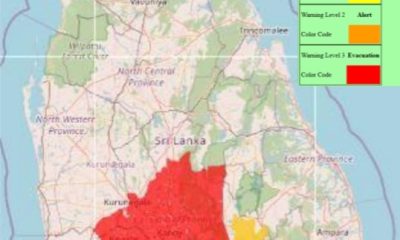
 News7 days ago
News7 days agoLevel III landslide early warning continue to be in force in the districts of Kandy, Kegalle, Kurunegala and Matale
-

 Business5 days ago
Business5 days agoLOLC Finance Factoring powers business growth
-
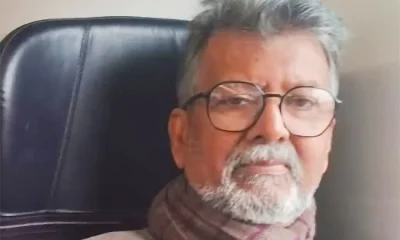
 News2 days ago
News2 days agoCyclone Ditwah leaves Sri Lanka’s biodiversity in ruins: Top scientist warns of unseen ecological disaster
-

 News5 days ago
News5 days agoCPC delegation meets JVP for talks on disaster response
-
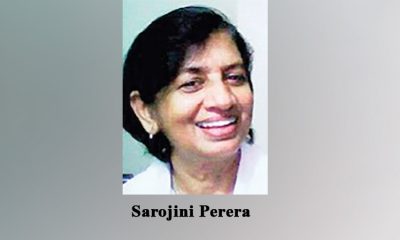
 News5 days ago
News5 days agoA 6th Year Accolade: The Eternal Opulence of My Fair Lady
-
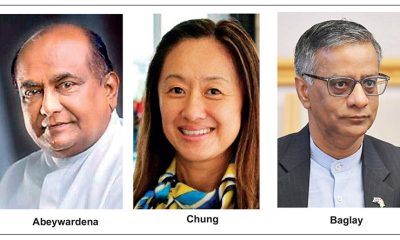
 Features1 day ago
Features1 day agoFinally, Mahinda Yapa sets the record straight
-

 News3 days ago
News3 days agoRising water level in Malwathu Oya triggers alert in Thanthirimale


